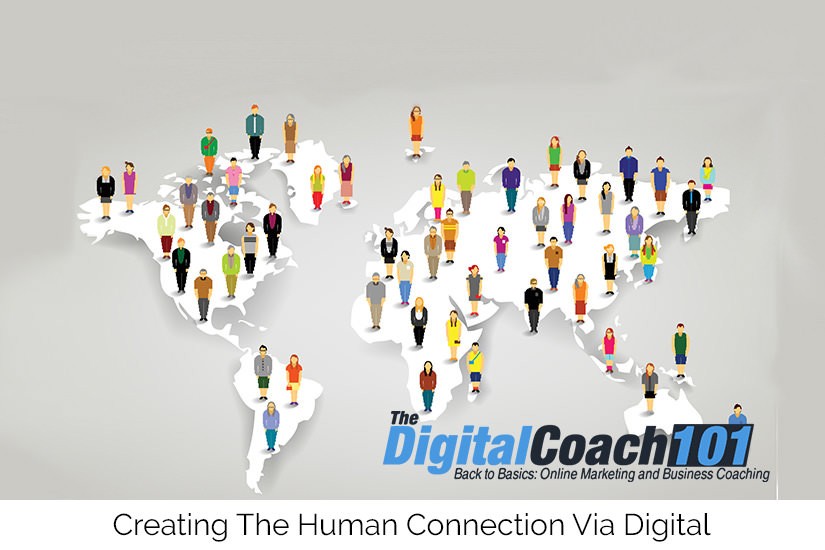Social Media – How To Talk To A Global Audience
Age may just be a number, but numbers in themselves can actually be quite important. Many regard the number 27, for example, as being very significant. Did you know our beloved Earth is made up of only 27% land? Maths boffins tell us that 27 is the trinity of trinities when it comes to numbers – 3x3x3=27, 3×3=9, and 3×9 = 27. And chat to a tennis fan and they’ll tell you a tennis court is 27 feet wide.
Why on Earth am I banging on about the number 27, you are no doubt asking? Well, dear reader, the reason is this:
Twenty-seven years ago, Tim Berners-Lee first introduced his “world wide web” to the world. It probably seems like a lifetime ago to Millennials, but to the rest of us, it really is no time at all. Koi fish live longer than 27 years, for goodness sake! Yet those 27 short years have forever changed the way we live, work and socialise.
It seems hard to believe that since that game-changing day back in 1990, the Internet has become an integral part of the everyday lives of almost half the world’s population. How did we ever manage without it? We shop online, bank online, search for information online and conduct large portions of our business online.
A Global Phenomenon
Global Internet statistics indicate that over 3.8 billion people around the world make use of the Internet. It’s a number that’s growing all the time. In the six months from January to June 2017, 38 million more users joined the online community. This means that, for the first time since the advent of the Web, people who are not using the Internet are actually in the minority.
The statistics are even more staggering when you look at social media users. There are currently just over three billion social media users worldwide – 110 million of whom joined in the three months between April and June 2017!
I know, right?
The numbers are mind-blowing. Social media use is increasing by over a million people every single day. That is 14 new users every. Single. Second.
In other words, about 40 percent of the world’s population uses social media, and many of these have more than one social profile. Of these, mobile users make up by far the biggest portion, with close to 2.8 billion active users.
Your Portal To People
Social media, unlike any other communication platform, has the ability to bring together people from all over the world – instantly. This makes it so much more powerful than just a way for friends and families to keep in touch with each other. It also provides businesses with an unmatchable opportunity to reach potential customers – both locally and internationally.
There are, however, key points to remember when taking your social media messages to a global audience. Cultural and language differences have to be taken into account, as do time zones.
Pick Your Platform
But before you even get to that stage, you first need to decide which social media platforms work best for your intended audiences. Different countries prefer different platforms, and you absolutely cannot apply a one-size-fits-all approach.
The Mega-Media, such as Facebook and Twitter, have global appeal. But there are many up and coming networks that are gaining huge popularity in other countries. You may well want to consider one or more of them when compiling your international social media strategy.
HootSuite has a very useful article on the emerging social networks worth leveraging. These are a few of the ones gaining the most momentum:
- WeChat – over 700 million active users every month. Very popular in China, Malaysia and Hong Kong.
- Whatsapp – South Africa, Malaysia and India are the three top markets for this platform, which enjoys over a billion active monthly users.
- Sino Weibo – 97% of this medium’s 275 million monthly users are located in China.
- VK – This is Russia’s most popular website, and most of its 66.5 million users internationally come from this country.
Clock The Competition
There are many businesses doing what you. Many have already successfully expanded their social media marketing efforts internationally. There’s no shame in taking a good look at what they’re doing and seeing why it’s working. This is called competitive analysis, and it can give you invaluable insight into what your competition is doing. What networks are they using? How often do they post content? And how do they customise their posts to suit their intended market?
HootSuite has a great guide to show you exactly how to do a competitive analysis.
Look At The Law
Some countries, particularly in the Middle and the Far East, have much stricter regulations governing Internet use in general, and social media activity in particular. These parameters will affect your social media campaign, so it’s vital that you make sure you’re on top of all the legal requirements before leveraging social media in other countries.
Keep Content Culturally Cool
It’s fatal to assume that what’s popular and appropriate in your home culture will enjoy the same acceptance in other countries. Not doing the proper research before posting could mean offending the very people you’re trying to impress. Some conversations will naturally transcend cultural differences, others are specific to certain countries. Make sure you’re aware of important holidays in the regions you’re looking to reach, and who will be talking about them. Check your spelling – US vs UK, for example, and make sure any images are demographically and culturally appropriate. Be very wary of perpetuating cultural stereotypes that may actually be offensive to your audience.
Learn The Lingo
English is considered the lingua franca of the digital world. But there’s no getting away from the fact that speaking to someone in their own language makes them far more comfortable. They will also be more receptive to your message and will form more positive associations to your brand.
According to Internet World Stats, Chinese is the second most popular language on the Internet, with over 770 million users citing it as their language of choice. This means it’s definitely worth making the effort to make sure this huge potential market understands your social media content.
But please, don’t just cut and paste your content into Google Translate!! There’s a huge difference between translating and interpreting. A word for word translation will not suffice – you need to make sure your intended meaning comes across. Your content must also be nuanced in the style of the native speaker.
Look At The Time!
Time zones don’t just affect you by hitting you with jetlag for three days after your trip to New Zealand or the States. They are also something you definitely have to take into account when scheduling your social media posts.
Unless you’re one of those vampire-types from the Twilight movie series, you need sleep. So it’s impossible to reach every time zone in real time. Fortunately, there are ways to overcome this. You can, for example, draft your posts in advance and then using an automated scheduler to post them at the right time. What time IS the right time? This really depends on where your audience is, and what research tells us about the optimal posting times for the countries and/or cultures you’re hoping to reach.
Of course, automatic scheduling doesn’t tackle the problem of timely responses to queries or comments from the other side of the world. Research tells us that the ideal response time for social media is within two to three hours. This is not helpful when you’re dealing with eight, 10 or even 12-hour time differences. There isn’t always an easy fix for this one, and you might need to look at hiring someone specifically to monitor your social media feeds outside of your normal waking hours.
Reaping The Rewards
If you’ve got this far into this blog, you might be feeling a little overwhelmed right about now. You thought using social media to talk to a global audience was going to a simple cut and paste exercise from your existing platforms to the international stage. You now know that it isn’t quite as easy as this, but it is nevertheless really worth the effort.
As Dominic Burch, former marketing and innovation director at supermarket group Asda, says, “Social media is like an amazing, free, real-time focus group.” He goes on to say that brands typically want to do the “sparkly stuff”, but that they need to first focus on customers’ needs and issues. “Invest in a good community management team – there are no shortcuts to doing this well,” he warns.
At Digital Coach, we get that all the available options can make formulating the right international social media strategy a bit overwhelming. We’re here to help you. Let’s chat about what you want to do, and how we can make that happen. We can’t promise you’ll take over the whole world, but we can definitely help you reach more of it than you are at present. Talk to us. We’re awesome.













